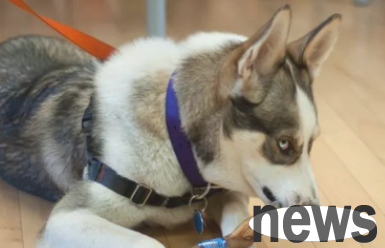As a pet doctor and dog pet trainer, I am often asked, "How can I stop my dog from baring my teeth at me when I eat? This is so disrespectful. When a dog performs this kind of personal behavior, no matter how I shout at him or take away his ing...
As a pet doctor and dog pet trainer, I am often asked, "How can I stop my dog from baring my teeth at me when I eat? This is so disrespectful. When a dog performs this kind of personal behavior, no matter how I shout at him or take away his ingredients, he still seems to have forgotten who I am actually raising him." Fortunately, the word disrespect has nothing to do with the owner's thoughts, even if the dog's behavior may seem like that. I can usually quickly draw a diagnosis: resource protection. What should I cherish most is that this problem is generally very easy to deal with

What is it?
Resource protection refers to the personal behavior of a dog when it avoids other animals (dogs, people, cats, etc.) taking away their own possessions. They have things (resources) they are willing to save, so dogs will do some things (protection) to ensure that other animals in the region are not easy to try to take them away. Dogs generally protect ingredients, snacks, small toys and cities. Sometimes they also protect some people. This type of protection is generally for other dogs (dog to dog), or humans (dog to humans).
How does it look?
Some behaviors of protecting individuals are self-evident: growling, grinning, biting, rushing/pursuing, or even taking things away and hiding them. Some personal protection behaviors are even smaller: muscles all over the body are tight/freezing, "the eyes are firm" (glare), or accelerate meal rate.
Why do dogs do that?
Because they are willing to do these things!
The key is that people need to understand that resource protection is all normal personal behavior of dogs. They send warnings to other dogs - roaring, grinning, staring, and froze - it is a dog trying to communicate civilly and politely, using the dog's words, and they expect you to go backwards. When you or another dog hears his plea and goes backwards, the conversation ends. It is effective in saying, "I hope I keep this delicious, thank you."

How do people do it?
Like many personal behavioral problems, there are three key ways to solve difficulties: acceptance, management methods and training. Under such matters, training involves skin allergies and anti-restraint.
Accepting - or not doing everything - this kind of method is suitable for these gentle guardians, not easily causing trouble or scare to either party, nor is it easy to get hurt. For example, when dogs protect their resources, dogs are "talking" and no one is injured, so they usually go with them. It's like the "animal planet" that starts in your big living room - if you sit and admire the two animals in their own words, it's enough.
Management method - suitable for these small risks to humans or animals to protect personal behaviors, and can be handled according to the method of changing the natural environment and allowing resource guardians to have a place to stay. In terms of proportion, when other dogs are around, they swallow their own ingredients significantly and quickly. In this way, they can just send the dog to another house and close the door when they are eating. He would be very grateful for his own ingredients. He would eat his own ingredients quietly! When the dog is gnawing on the bones, the owner will roar when approaching. For such a thing, take the dog to the air box and wait until he eats it. Management methods can be used in training other more serious personal behavior problems, or in situations where training cannot be done.
Training - suitable for relatively serious resource protection behaviors, which can cause damage to these situations or cause trouble to the owner. This type of time project investment is of use value. If the owner wants to, he can also carry out protective training (highly recommended during the young dog period). The top priority of this type of training is to change the dog's psychological phenomena about everything, not to immediately care about changing the dog's personal behavior (roaring, biting, etc.). Turn the dog's idea from "they want to take away my ingredients!" to "they want to take away my ingredients! Yes, yes!"